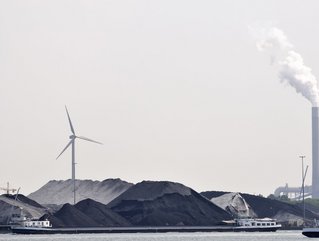China's offshore wind leap shows renewable energy failures

Coal-dependent China's recent overtake of the United Kingdom for the world's largest offshore wind capacity, with nearly half global supply, is an impressive feat drawing deserved praise but also demonstrates how underutilised that renewable energy source really is.
The world needs around 556 exajoules of energy annually, and it can be generated by 7 million square kilometres of offshore wind turbine farms. It is true that more countries are showing their commitment to harnessing green power and leaving coal power behind, and China is the latest to make a breakthrough, but these are still breakthroughs in relatively unbroken ground – a game few countries are playing at any sort of scale. In 2021, China added more than any other country managed to install in the past five years.
The Chinese National Energy Administration announced that the country now can produce up to 26 gigawatts of electricity after connecting 17 gigawatts of offshore wind capacity to its grid last year, adding more to its global share to almost half of the global offshore wind-power capacity. Considering the country's penchant for coal power, this was a move stacked with meaning as much as proportional analysis.

The UK was the largest offshore wind producer globally in 2019 with just 8 gigawatts of capacity. The US, meanwhile, targeted 30 gigawatts of offshore wind capacity by 2030, but the latest big project it announced recently only promised 800 megawatts.
The International Renewable Energy Agency (IRENA) revealed that between 2015 and 2020, the world managed to add a little over 14 gigawatts of offshore wind power. IRENA reports that the rest of the world added a measly 2.5 gigawatts of offshore wind power in 2021, disappointing after the record year before. Including China, current global capacity now sits at 54 gigawatts.
It is not all bad, though, and there are plenty of inspiring stories out there. The records set in 2020 are a big deal and stories like that of Ørsted and its 12-year turnaround from an oil and gas firm to the world’s largest offshore wind developer indicate the kind of growth we can expect.

Will offshore wind bring coal-burning China's net-zero goal closer?
Despite being the world's leading investor in renewable energy since 2013, Chine also continues to rely heavily on coal, which accounts for 57% of its energy production. It is also accountable for nearly 30% of global emissions.
China also commissioned an exorbitant order of 38.4 gigawatts of coal-power plants in 2021, but in the same year, the country announced its decision to stop building new coal-fired power projects overseas and phase down coal usage to demonstrate its commitment to climate change. It also admitted that its emissions will peak before 2030, but promised the country will manage to reach net-zero by 2060.
China leads not only in onshore and offshore wind power but also has three times more renewable energy capacity than any other country. It also has almost half the world's electric vehicles and 98% of electric buses in 2019 were used in China.

While the country has rarely been short on resources, observers say its government lacks policy ambition. For instance, China's Outline of the 14th Five-Year Plan (2021-2025) for National Economic and Social Development and the Long-Range Objectives Through the Year 2035 only set a modest carbon intensity reduction target, promising an 18% decrease from 2020 to 2025.
Some of China’s numbers are very impressive but its developments are sometimes contradictory and enigmatic. Right now it is unclear whether its demonstration of a commitment to net zero will be just that – a demonstration of what could be – rather than something that actually will be.
• Join global business leaders and sustainability experts taking meaningful action at Sustainability LIVE, held at Tobacco Dock, London, 23-24 February 2022. Register to attend today! Click here to learn more.






